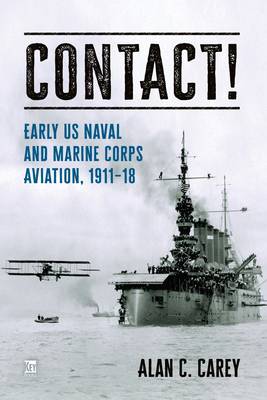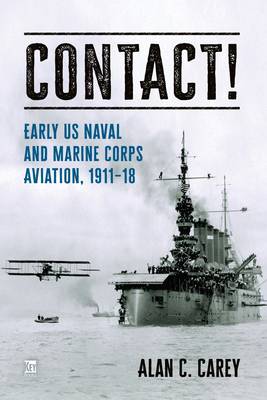
- Afhalen na 1 uur in een winkel met voorraad
- Gratis thuislevering in België vanaf € 30
- Ruim aanbod met 7 miljoen producten
- Afhalen na 1 uur in een winkel met voorraad
- Gratis thuislevering in België vanaf € 30
- Ruim aanbod met 7 miljoen producten
Zoeken
€ 41,95
+ 83 punten
Omschrijving
The development of US naval aviation was much in doubt, especially during its formative years between 1910 and 1913. The lack of interest and allocation of money for aviation changed in 1916, when it became clear that the United States could be drawn into the war in Europe. Yet, the naval and marine air sections were woefully unprepared for warfare when the United States declared war against the Central Powers and had to rely on its European allies to provide bombers and pursuit aircraft throughout the war.
There was initially tension between the Navy and Marine Corps as the naval hierarchy saw no need to provide land-based aircraft as the duty of aviation was to patrol and for antisubmarine operations by using seaplanes and flying boats. Negotiations brought forth the concept of the Northern Bombing Group, a land-based unit equipped primarily with British and Italian aircraft. This historical narrative encompasses the formation and development of the US Navy and Marine Corps air services from 1911 to 1918. It includes pre-war and wartime training, aircraft development, operations, and personalities such as the Navy's Theodore "Spuds" Ellyson and Marine Alfred A. Cunningham. Both pioneers continuously fought to maintain and grow their service's air arms. Their tenacity would, within seven years, lead to the organization of wartime scouting, pursuit, and bombing units.
There was initially tension between the Navy and Marine Corps as the naval hierarchy saw no need to provide land-based aircraft as the duty of aviation was to patrol and for antisubmarine operations by using seaplanes and flying boats. Negotiations brought forth the concept of the Northern Bombing Group, a land-based unit equipped primarily with British and Italian aircraft. This historical narrative encompasses the formation and development of the US Navy and Marine Corps air services from 1911 to 1918. It includes pre-war and wartime training, aircraft development, operations, and personalities such as the Navy's Theodore "Spuds" Ellyson and Marine Alfred A. Cunningham. Both pioneers continuously fought to maintain and grow their service's air arms. Their tenacity would, within seven years, lead to the organization of wartime scouting, pursuit, and bombing units.
Specificaties
Betrokkenen
- Auteur(s):
- Uitgeverij:
Inhoud
- Aantal bladzijden:
- 384
- Taal:
- Engels
Eigenschappen
- Productcode (EAN):
- 9781802826470
- Verschijningsdatum:
- 1/01/2024
- Uitvoering:
- Hardcover
- Formaat:
- Genaaid
- Afmetingen:
- 155 mm x 234 mm

Alleen bij Standaard Boekhandel
+ 83 punten op je klantenkaart van Standaard Boekhandel
Beoordelingen
We publiceren alleen reviews die voldoen aan de voorwaarden voor reviews. Bekijk onze voorwaarden voor reviews.











